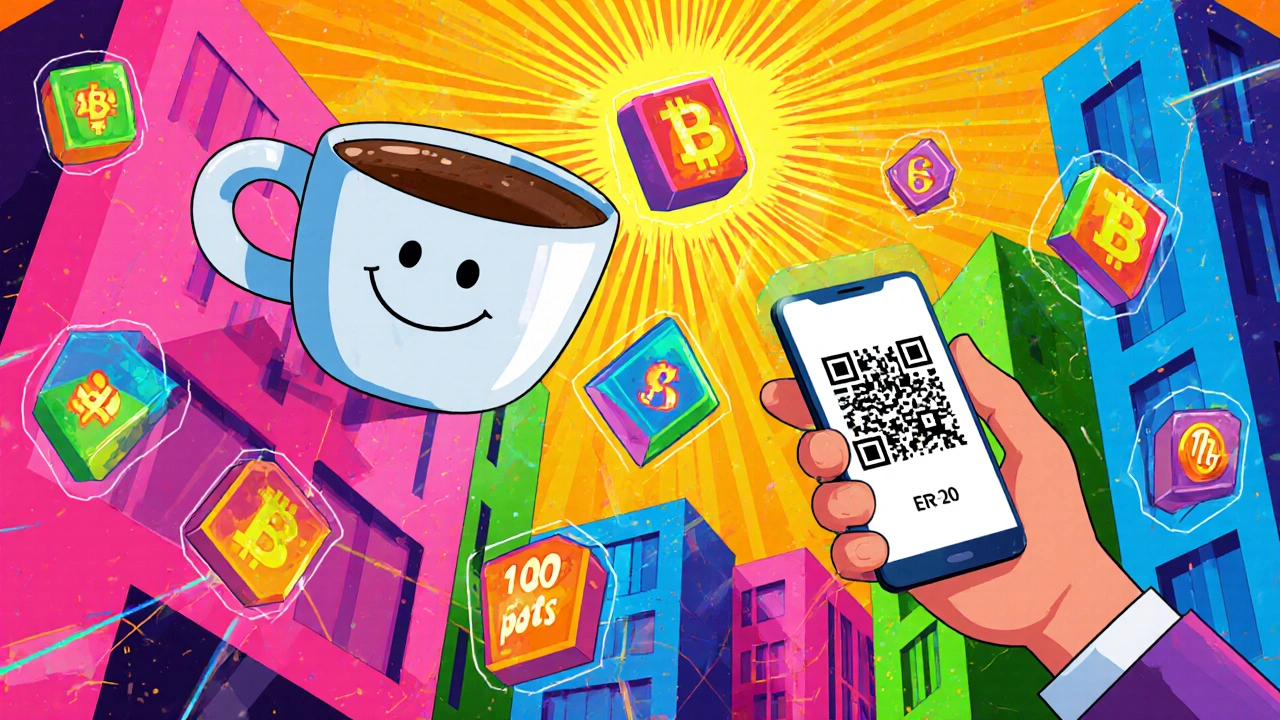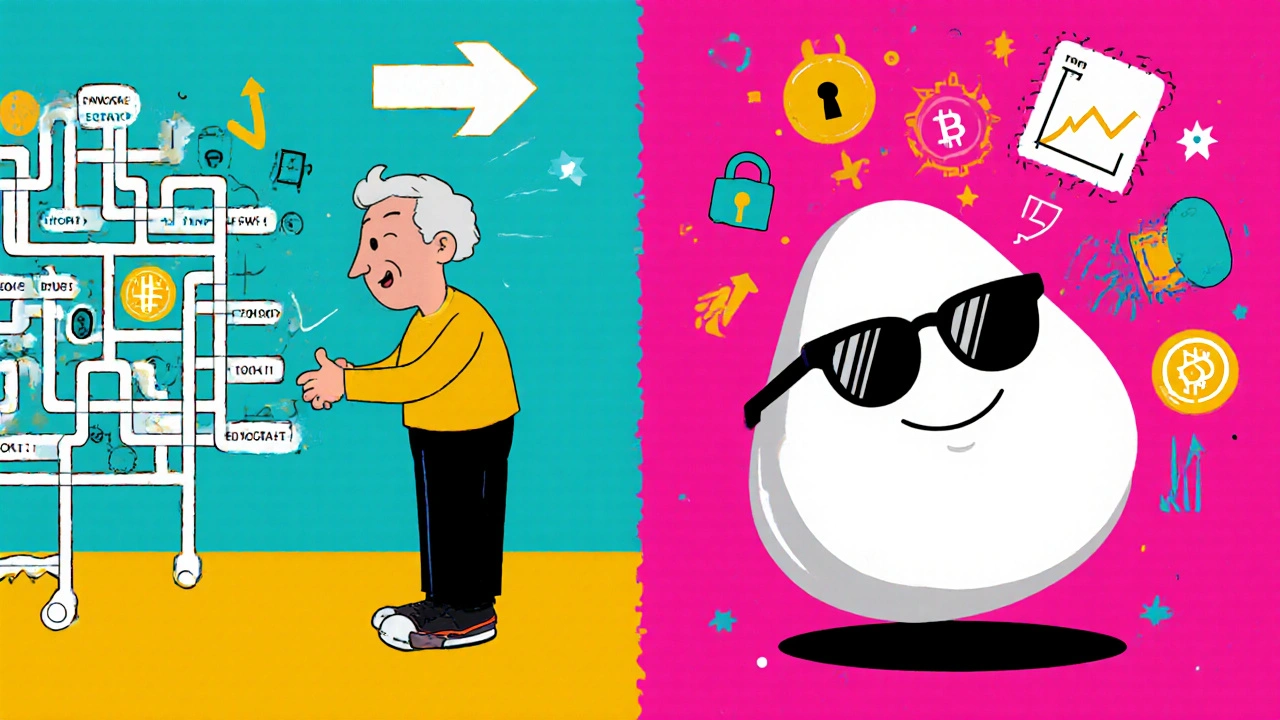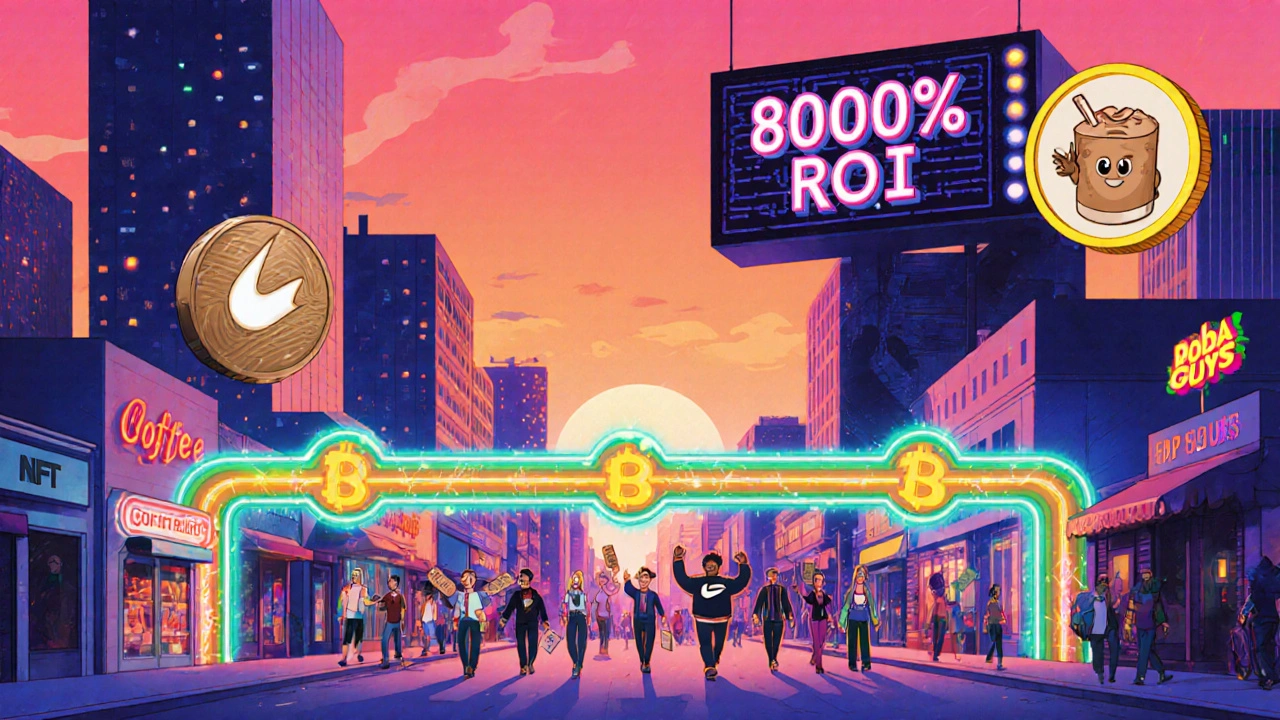Retail Loyalty Programs: Tokenized Points and Rewards
 Nov, 19 2025
Nov, 19 2025
What Exactly Are Tokenized Loyalty Points?
Think of your usual coffee shop loyalty card. You get a stamp every time you buy a drink, and after ten, you get a free one. Simple, right? But what if that stamp wasn’t just a stamp-it was a digital asset you could trade, sell, or even earn interest on? That’s what tokenized loyalty points are.
Instead of points locked inside a brand’s app, tokenized rewards are built on blockchain technology. Each point, tier badge, or discount becomes a digital token-like a tiny piece of code you own. You don’t just get to use it; you control it. These tokens live in your digital wallet, not the retailer’s database. That means they can’t be deleted, devalued, or expired just because the company changes its mind.
Brands like Boba Guys started using this in 2023. Customers earned tokens every time they bought a drink. Within six months, 15,000 people joined. And here’s the kicker: 82% of them used their rewards within seven days. Compare that to traditional programs, where 65-85% of points go unused. Tokenized systems don’t just feel different-they work better.
How Do Tokenized Rewards Actually Work?
It sounds complex, but it’s simpler than you think. When you make a purchase, the store’s system triggers a smart contract-a self-executing code on a blockchain. That contract instantly sends you a token. No waiting 24 hours for points to appear. No glitches. Just a quick confirmation, often in under two seconds.
There are two main types of tokens used:
- Fungible tokens (ERC-20): These are like digital cash. Each point is identical and interchangeable. Buy $10, get 100 points. Buy $20, get 200. Easy.
- Non-fungible tokens (ERC-721): These are unique. Think of them as digital collectibles-special access to a secret menu item, early product drops, or a limited-edition badge. Nike’s .Swoosh program uses these for exclusive membership tiers.
Most retail programs run on Solana because it’s fast and cheap. A single transaction costs about $0.00025. That’s nothing compared to older blockchains like Ethereum, where fees can spike during busy times. Boba Guys processed over 15,000 customer wallets with zero lag. No one was waiting around for their free boba to show up.
To join, you need a digital wallet. Most people use MetaMask or Phantom. Some brands even build their own embedded wallets inside their apps so you don’t have to leave the experience. The key? Make it seamless. If you have to download a new app, read a 10-page guide, and copy-paste a wallet address, most people will quit.
Why Do Customers Prefer Tokenized Rewards?
It’s not just about tech-it’s about control. In traditional loyalty programs, you’re basically renting points. The company owns them. They can change the rules, reduce their value, or shut the program down. Ever had points expire because you didn’t shop enough? That’s not loyalty-it’s a trap.
Tokenized systems flip that. You own the points. You can:
- Redeem them for discounts, free products, or experiences
- Sell them on crypto exchanges like Coinmetro
- Trade them with other customers
- Hold them as an asset-if their value rises, you profit
According to Coinmetro’s 2024 survey, 78% of users valued the ability to trade their rewards. One in three actually sold tokens for a profit-on average, 12.7% above their face value. That’s not a perk. That’s real money.
And engagement? It skyrockets. Boba Guys saw a 67% increase in monthly visits and 65% higher spending per member. Why? Because when you own something, you care about it. You check your wallet. You look for ways to earn more. You talk about it with friends. It becomes part of your routine.

What Are the Biggest Challenges?
Tokenized loyalty isn’t magic. It has real hurdles.
First, the learning curve. If you’ve never used a crypto wallet, the setup can feel intimidating. Krayon Digital found that 15-20% of customers drop off during onboarding. Older shoppers, especially those over 50, need more help. Programs that include in-store QR codes linking to 90-second video guides cut abandonment by 57%.
Second, regulatory uncertainty. In the U.S., the SEC hasn’t said whether loyalty tokens are securities. That’s a problem for big brands. If regulators decide these tokens are investments, companies could face legal risks. The EU’s MiCA rules are clearer, but in the U.S., 54% of programs are operating in a gray zone.
Third, poor design kills more programs than tech. Tokenminds found that 68% of failed tokenized loyalty programs didn’t fail because of blockchain-they failed because the rewards felt useless. Giving someone a token that only gets them a 10% discount on coffee? That’s not exciting. But unlocking a free custom drink recipe, early access to a new flavor, or a VIP event? That’s sticky.
Nike’s .Swoosh program lost 28% of users because redemption paths were unclear. People didn’t know what to do with their NFTs. The tech worked. The experience didn’t.
Who’s Winning Right Now?
It’s not the big chains. It’s the nimble ones.
Boba Guys is the poster child. They launched their Passport program in late 2023. No big marketing campaign. No flashy ads. Just a simple idea: earn tokens, unlock secrets, trade if you want. Within six months, they saw an 800% return on their program costs. Their flagship store in Oakland now has 70% of all transactions flowing through the token system.
Nike’s .Swoosh isn’t about discounts-it’s about status. Owning a .Swoosh NFT gives you access to exclusive drops, early sales, and even design input on future products. It’s not loyalty. It’s membership.
And then there’s Shopify. In April 2024, they announced a partnership with Photon to bring tokenized loyalty to all 2.1 million merchants on their platform. Beta testing starts in Q3 2024. That’s a signal: this isn’t a niche experiment anymore. It’s going mainstream.
Industries leading the charge? Fashion (38% of programs), food service (29%), and travel (19%). All of them share one thing: their customers are digitally native. If your average customer is under 35, you’re in a good position to try this.

Should Your Business Try This?
If you’re a small retailer, don’t rush. But if you’re thinking about rebuilding your loyalty program, here’s what to ask:
- Do your customers already use digital wallets? If not, can you guide them through it?
- Are you targeting Gen Z or millennials? Tokenized rewards work best with people who understand crypto.
- Can you design rewards that feel valuable-not just discounts, but experiences, exclusivity, or status?
- Are you prepared to explain this clearly? You’ll need videos, in-store staff training, and simple language.
Don’t start with NFTs. Start with fungible tokens. Let people earn points like normal, but give them the option to trade or hold them. Test it with your most loyal customers first. Track how often they return. How much more do they spend? Do they tell friends?
Tokenized loyalty isn’t about being cool. It’s about giving customers real ownership. And when people feel like they own something, they stick around.
What’s Next?
The next wave is interoperability. Right now, you can’t take your Boba Guys token and spend it at Nike. But TokenD is launching Universal Token Protocol v2.1 in Q4 2024. That could let you use your loyalty tokens across multiple brands.
Then there’s DeFi. Early pilots are letting you earn yield on your loyalty tokens-like putting them in a savings account that pays interest in crypto. Imagine earning free boba just by holding your points.
And regulation? The U.S. Treasury’s Digital Asset Working Group is expected to give clearer guidance by Q2 2025. Once that happens, big banks and retailers will move in fast.
This isn’t the future. It’s happening now. The question isn’t whether tokenized loyalty will replace traditional programs. It’s how quickly you’ll adapt-or get left behind.
